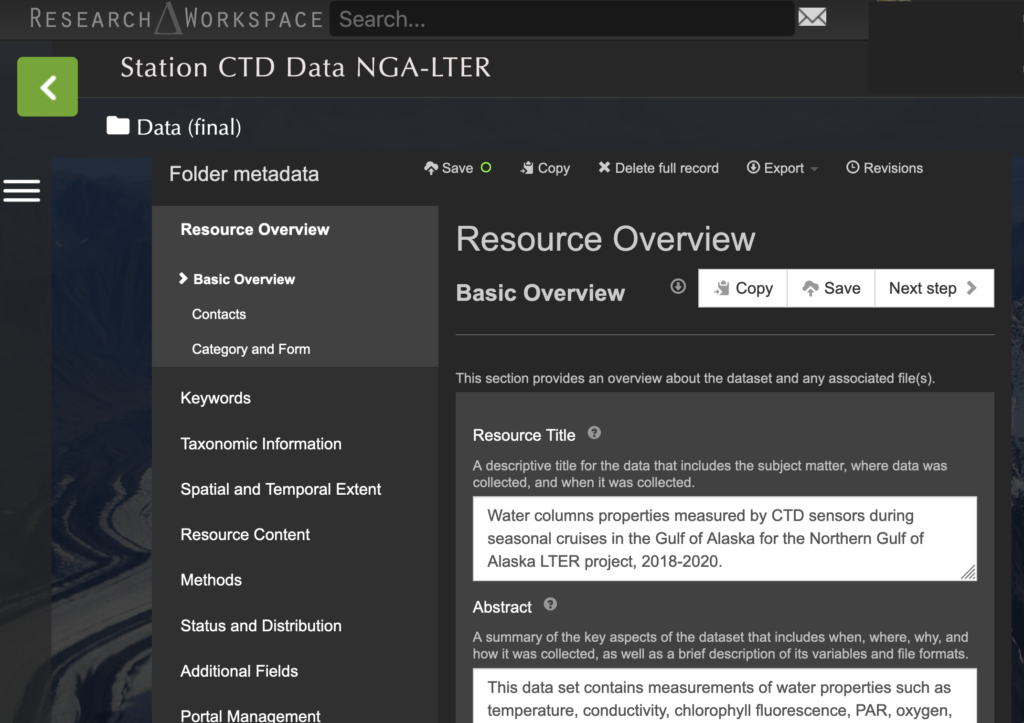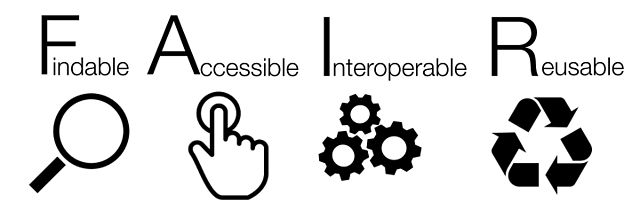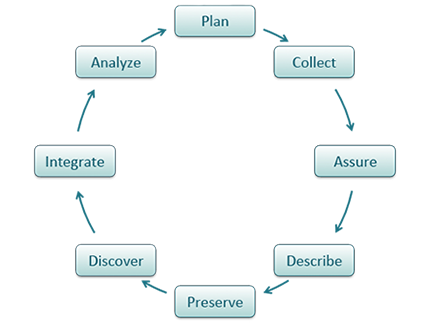Overview
This page provides information on how information management is handled within the NGA LTER program. Primarily, it describes the infrastructure that enables data publication and discoverability. Additionally, it summarizes the principles that have guided the development of our system.
Information Management Team
Axiom Data Science serves as the technical manager of NGA LTER’s information management (IM) system. Axiom’s mission includes developing scalable cyberinfrastructure that is leveraged across a variety of users, clients, and institutions. The Axiom team includes data librarians, data coordinators, data scientists, as well as project managers and technical experts who build and maintain scalable solutions for managing, processing, and visualizing high-volume, heterogeneous data streams. In this case, Axiom’s Chris Turner is NGA LTER’s Information Manager. Additionally, Axiom Data Science infrastructure stores our data and manages our data publication.
Information Management Infrastructure
NGA LTER researchers organize their datasets and publish them to archives via an online tool called the Research Workspace. The Research Workspace is a centrally managed, web-based, data management system. For example, it functions as a working platform for sharing preliminary data sets and for performing data analysis. Further, it serves as a launching point for data publication. Using the Research Workspace, researchers manage their own scientific data and publish it with metadata created using the Workspace’s incorporated metadata editor.

The Research Workspace includes a built-in metadata editor. This online form attaches metadata to files or folders in the Research workspace. Then researchers fill in the required information, or copy it from pre-existing metadata versions. In the end, the resulting metadata record is ISO-compliant; it is linked to the data during publication, or can be exported as ISO 19110 or ISO 19115 XML.

Support for the NGA LTER website is provided by the University of Alaska Fairbanks’ Research Computing Systems. The website a WordPress site that uses the make theme. Initially, the Make Builder plugin provided formatting options to the web pages. However lately, we’ve been migrating to the Gutenberg editor. A Zotero database manages citations and displays them on the site using a WordPress plugin.
Relationship with DataONE
DataONE is a distributed network of data centers, science networks or organizations. Each of these organizations hosts its own data, and using metadata, the DataONE network ties them together with a single search interface. This facilitates data discovery.
The Axiom cyberinfrastructure stack integrates directly with DataONE. The Research Workspace has been a DataONE Member Repository since 2017, and assigns digital object identifiers (DOIs) for archived data.
Data Access
NGA LTER’s collaboration with Axiom Data Science and DataONE enables discovery of NGA LTER data via the DataONE search interface. Recently, development efforts by DataONE have extended these search capabilities with the creation of branded data catalogs. Now, current research outputs can be discovered alongside data from previous research efforts at the NGA LTER site. We established our plan to access our data via DataONE during NGA’s proposal development in 2016, and so it predates the LTER Data Portal offered by the Environmental Data Initiative (EDI).
Our site is also pushing towards integrating the long time series of data that are available at our research site as a result of the efforts of previous research projects. Currently, these efforts are underway,. The results will become our Signature Datasets. Eventually, we hope these products are useful by synthesis efforts with other LTER sites.
We are also interested in contributing data to educational initiatives. For instance, we are working with the LTER Network and Allison Horst to extend Palmer Penguins from the Palmer Station, Antarctica, LTER to a training dataset that includes data from multiple LTER sites. More on this effort as it becomes available.
Guiding Principles:
LTER Policies

As a member of the LTER Network, NGA LTER adheres to LTER’s guiding IM documents.
FAIR Data Principles

The LTER Network is a signatory to the Enabling FAIR Data Project, and so is DataONE. Accordingly, we are committed to making data findable, accessible, interoperable, and reusable, according to the FAIR Guiding Principles.
Data Lifecycle

The idea of the data life cycle contributes to NGA LTER’s information management. This life cycle has been described in many forms (including in DataONE’s Best Practices). Regardless of the representation, the data life cycle begins before any data are collected and continues long after the original research project ends.
Being guided by the data lifecycle means creating a data management plan as early as possible. Subsequently, file formats should be non-proprietary, and metadata should accompany data so research results will be usable in perpetuity. Practices like these are included in these Data Management Best Practices.
Questions or Comments?
Chris Turner (Email)
Data Librarian
Axiom Data Science


